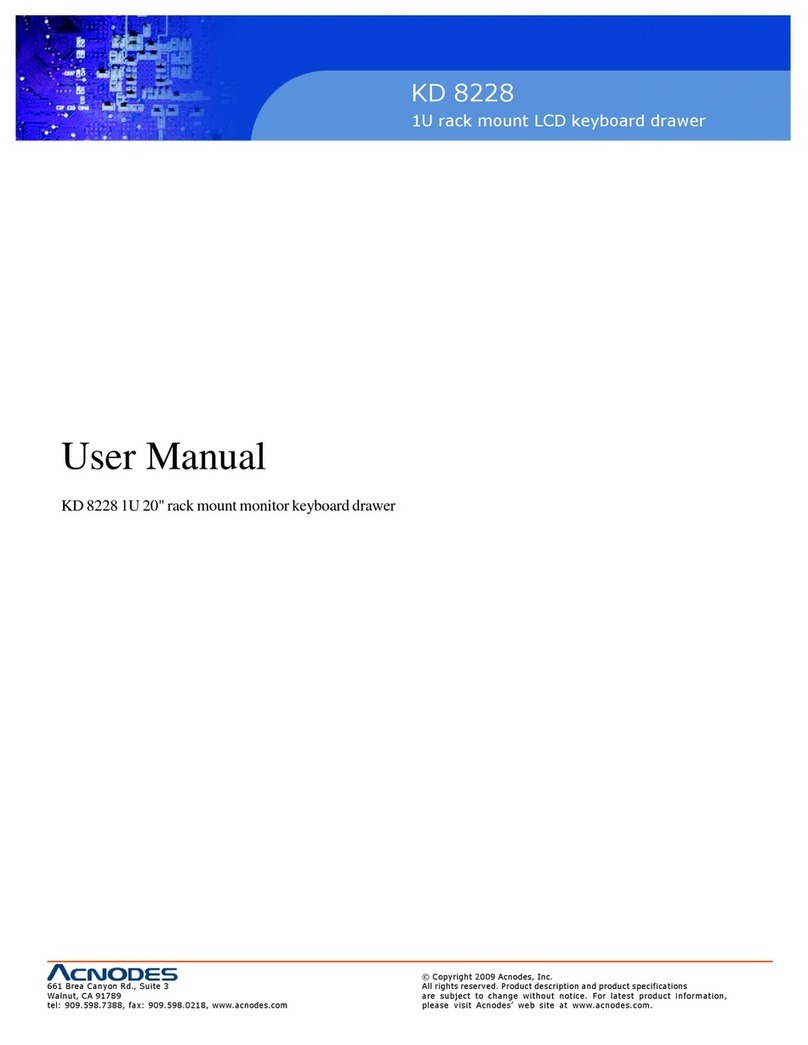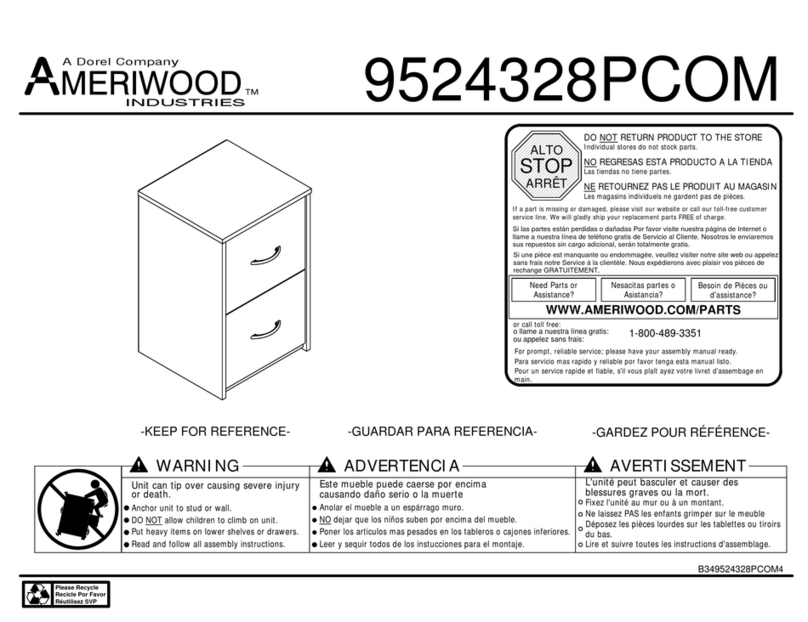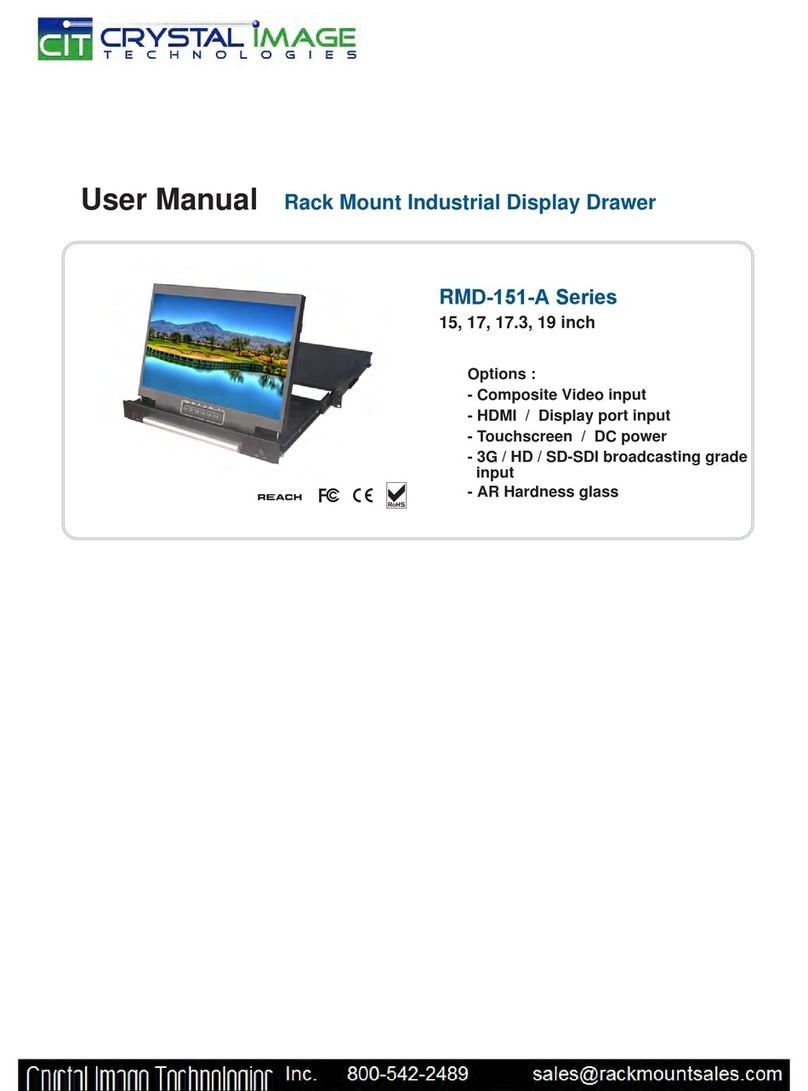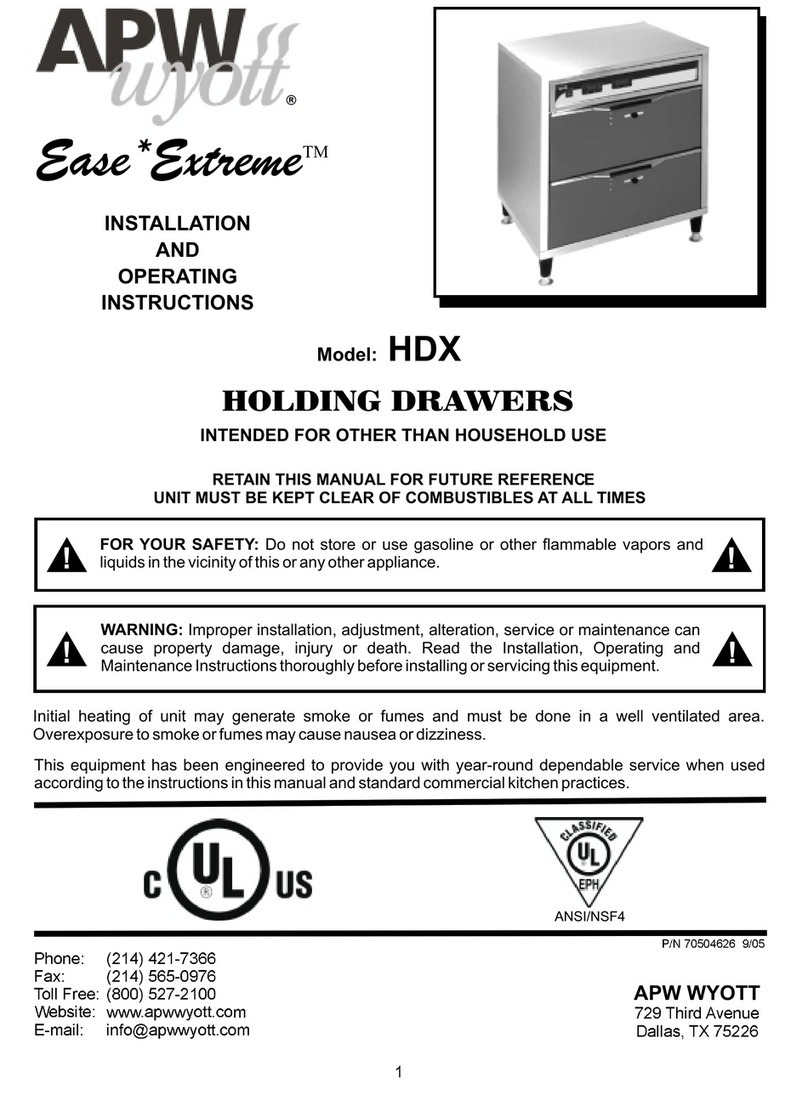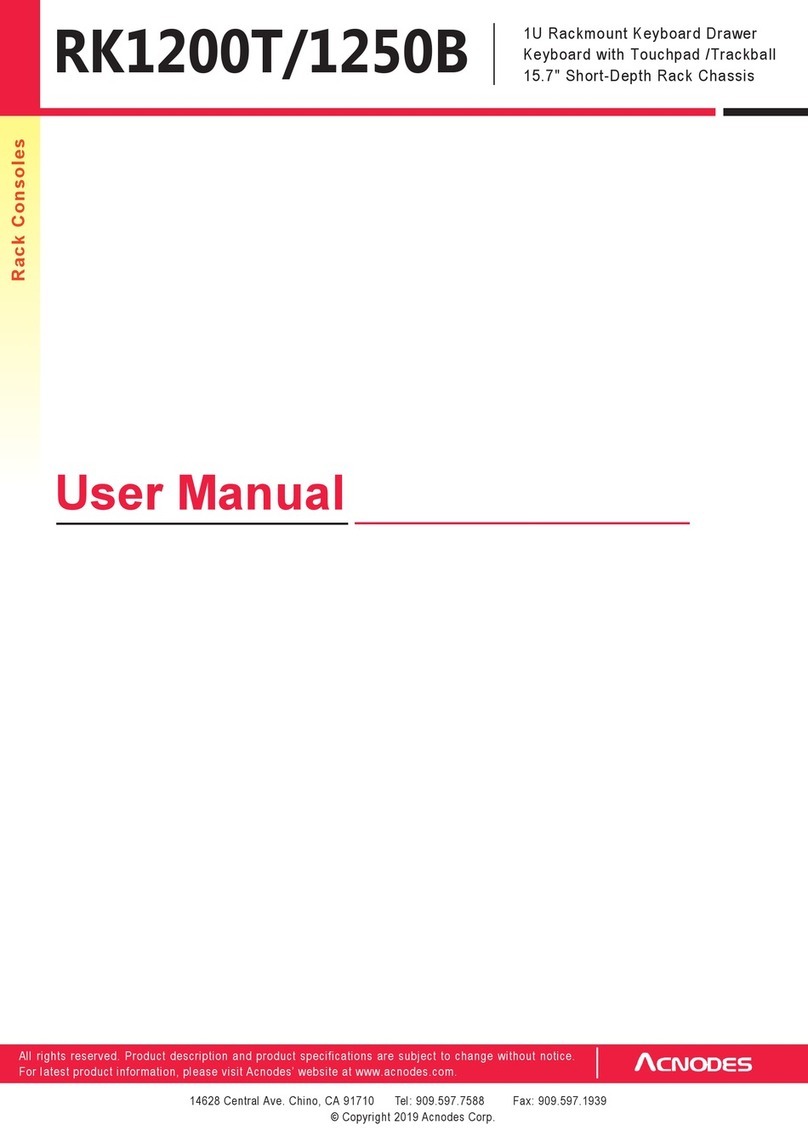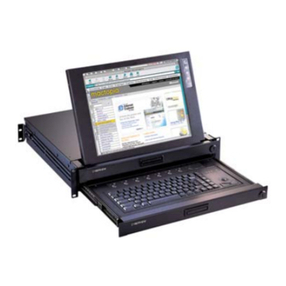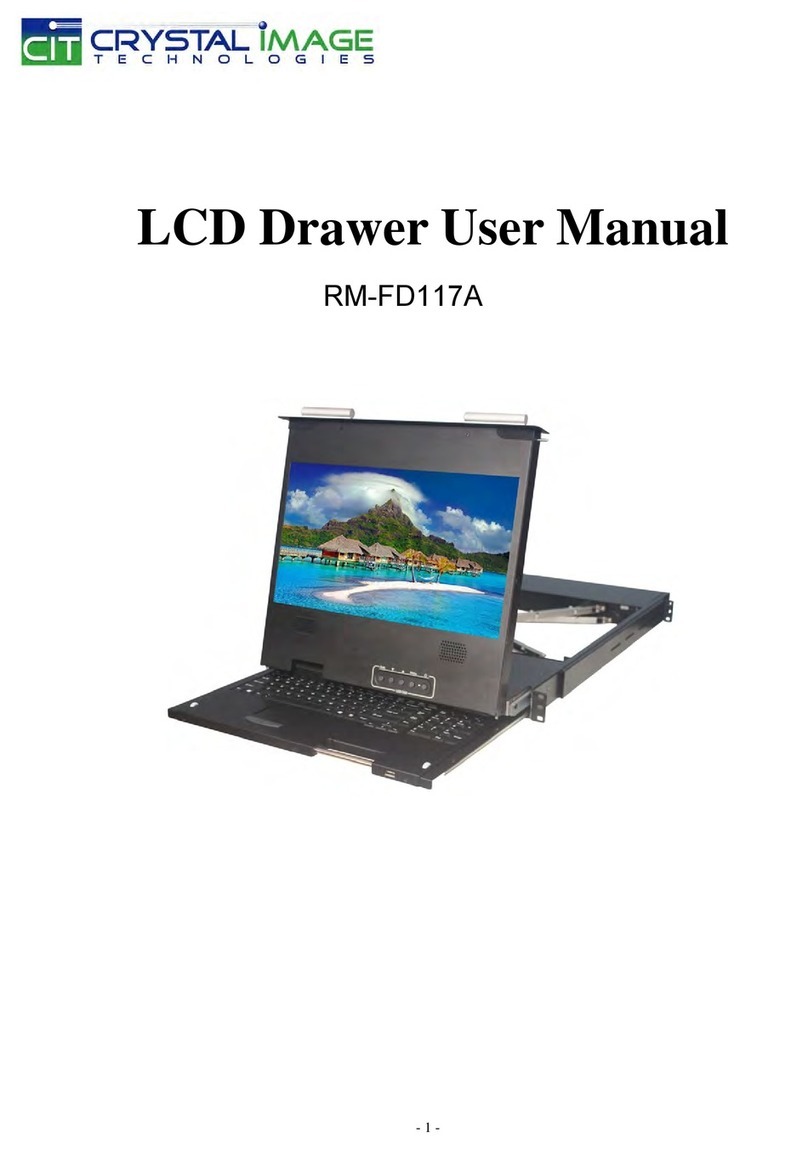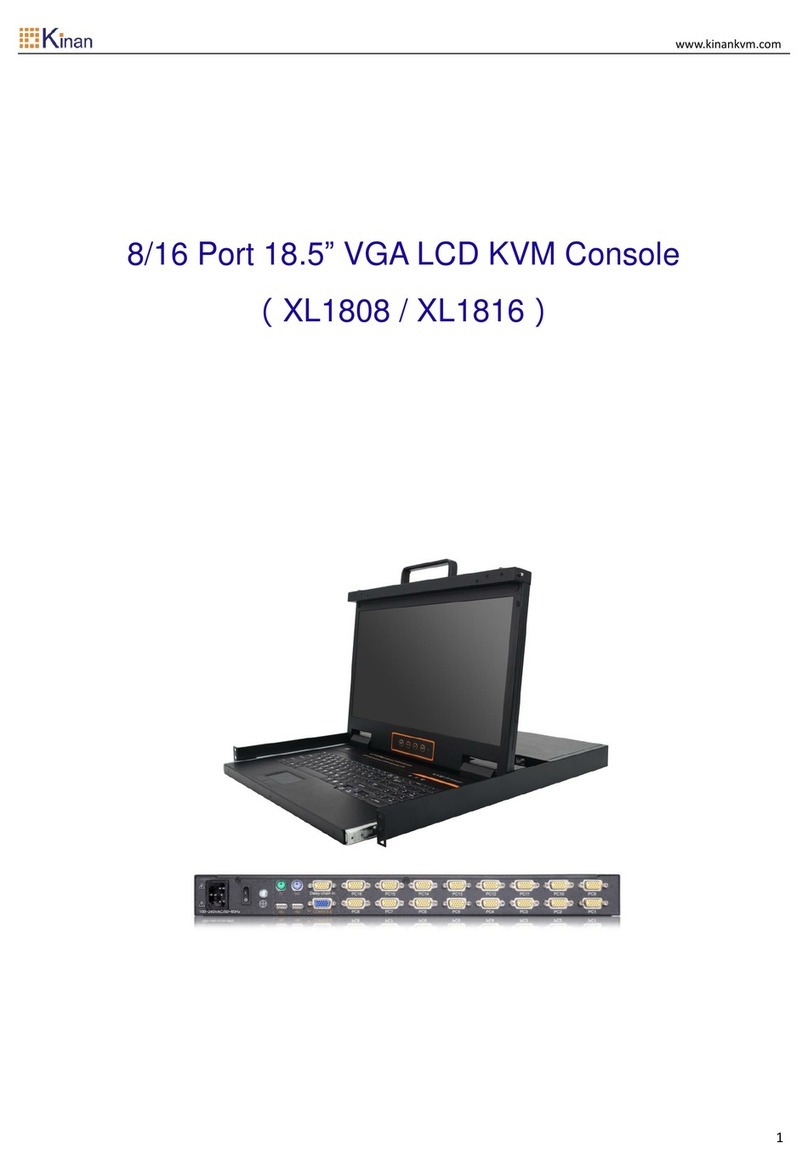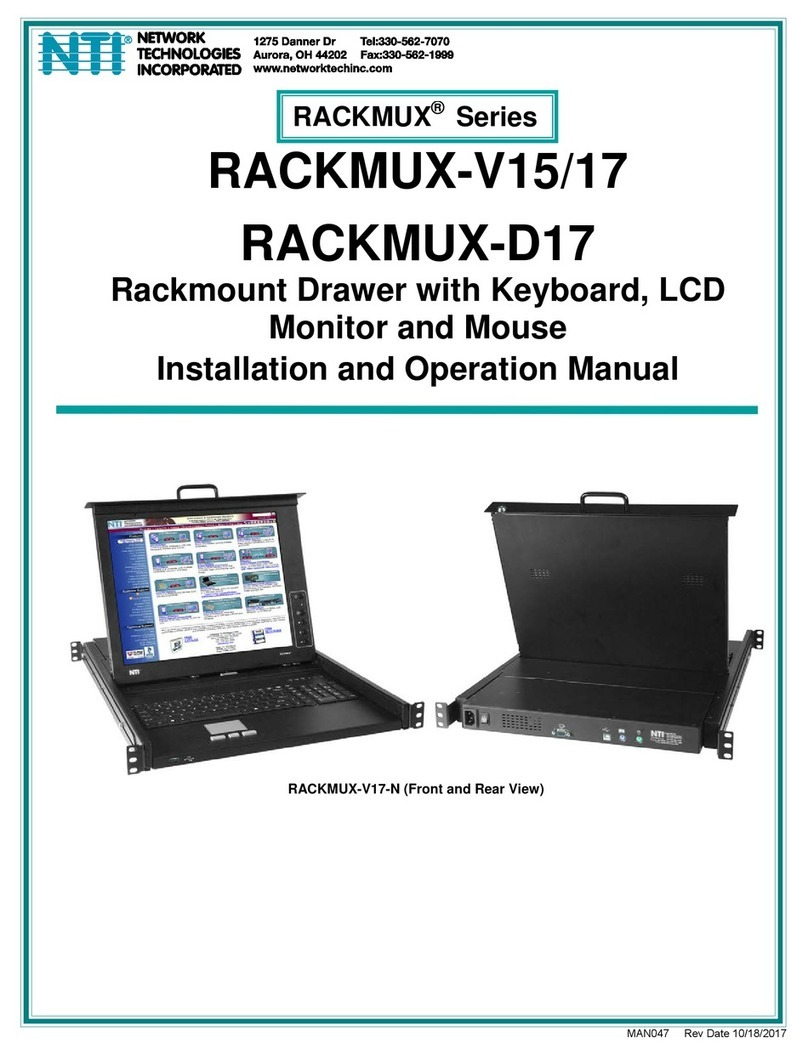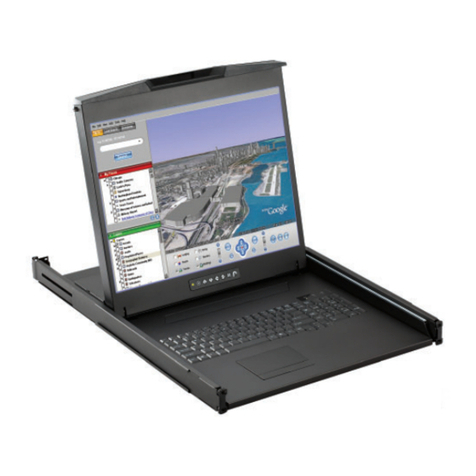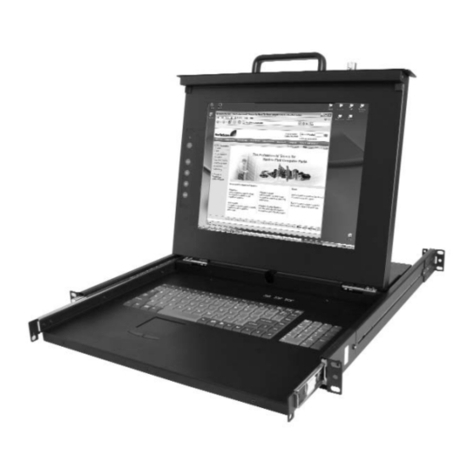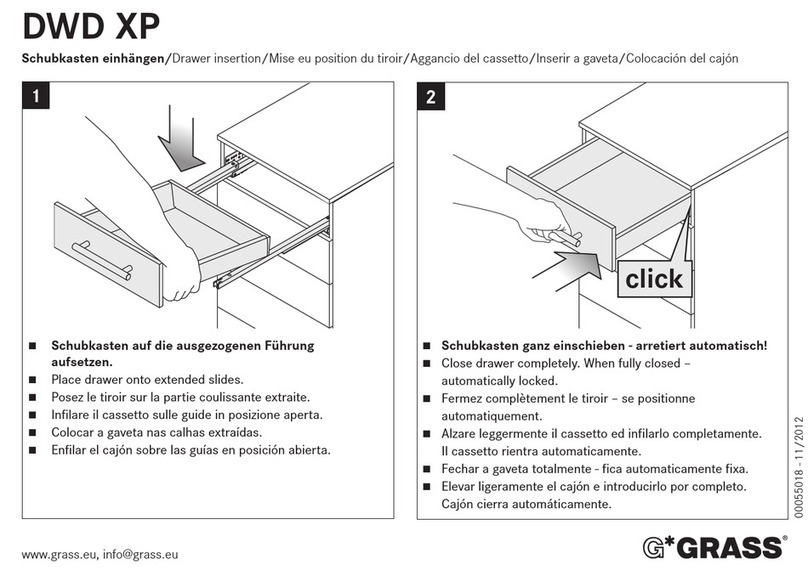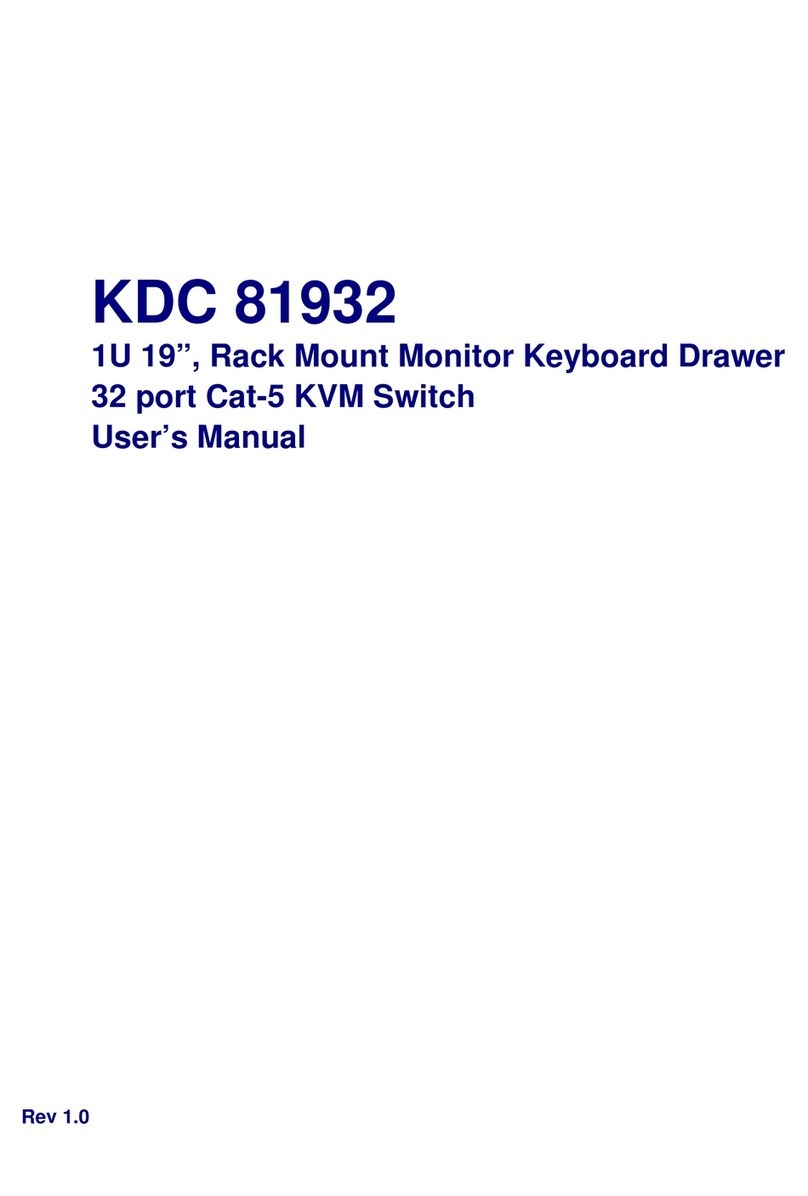Misc
1. Use the AUTO ( ) and COLOR ( ) buttons to scroll to the
desired selection from the list below:
Signal Source - select Video source(D-SUB)
Reset - resets to factory default setting
Factory Mode - accesses factory setting mode
Back - returns to the main OSD menu
2. Press the MENU button to enter/confirm selection.
3. Use the AUTO ( ) and COLOR ( ) buttons to adjust the
values.
4. Press the SEL button to execute the settings in the menu.
5. Use the AUTO ( ) and COLOR ( ) buttons to select Back.
6. Press the SEL button to confirm and go back to the main OSD
menu.
Factory Mode*
1. Use the AUTO ( ) and COLOR ( ) buttons to scroll to the
desired selection from the list below:
Auto Color
Reset- reserved for future use; has no function right now
ADC Offset
ADC Gain
9300K
6500K
5600K
sRGB
User
Brightness
Auto Config
Exit
2. Press the SEL button to enter/confirm selection.
3. Use the AUTO ( ) and COLOR ( ) buttons to go to R, G, or B
selections.
4. Press the SEL button to confirm selection.
5. Use the AUTO ( ) and COLOR ( ) buttons to adjust the
values.
6. Press the SEL button to enter/confirm changed values.
7. Press the MENU button to exit to Factory Mode menu.
8. Use the AUTO ( ) and COLOR ( ) buttons to select Exit.
9. Press the SEL button to confirm and go back to the main OSD
menu.
*Note:
1. Factory Mode is only available in English language.
Settings in the Factory Mode should NOT be changed unless done by
authorized trained personnel or experienced professionals.
Buttons Features
ON/OFF Powers ON/OFF the LCD panel. When powered on the LED will light on.
SEL Confirms the selection or changed value
AUTO
Normal Operation: automatically adjusts to optimal screen placement.
Other Features: Scrolls in a menu/function selection, or increases the value
during adjustment
COLOR
Normal Operation: automatically adjusts to proper color (useful if screen is not
displaying proper colors).
Other Features: Scroll in a menu/function selection, or decreases the value
during adjustment
MENU
Serves two functions:
1) accesses the Main OSD menu
2) acts as Confirm & Exit button in Factory Mode and Color Adjust Mode (only)
Main OSD Menu
1. Press the MENU button to bring up the OSD as illustrated on the
left.
2. Use the AUTO ( ) and COLOR ( ) buttons to scroll to the
desired submenu from the list below:
Color -settings for contrast, brightness, RGB levels, and
color temp.
Image Setting -settings for clock, phase, gamma, and
sharpness.
Position -settings for horizontal and vertical positions.
OSD Menu -settings for OSD positions and OSD display
timer
Language -settings for 7 different languages (English,
French, German, Spanish, Traditional Chinese, and
Simplified Chinese.)
Misc. -settings for signal source, reset, and factor mode.
Exit -exits the main OSD menu.
3. Press the SEL button to enter the selected submenu.
LCD FLAT PANEL DISPLAY
Instruction Manual for Panel Controls and OSD Functions
Panel Controls and Functions
78D502-803-103
Color
1. Use the AUTO ( ) and COLOR ( ) buttons to scroll to the
desired selection from the list below:
Contrast - adjusts LCD Contrast level (0~100)
Brightness - adjusts LCD Brightness level (0~255)
Color Adjust – this option is disabled by default, as the
monitor is factory set to default color temp of 9300K. To
enable this feature and be able to manually adjust the R,G
or B values, you would need to first go to the Color Temp
submenu and change to USER option. After that, you can
custom adjust LCD RGB Color level as indicated below:
Red:(0~255) Green:(0~255) Blue:(0~255)
Once you enter the RGB submenu, use AUTO ( ) and
COLOR ( ) buttons to change the respective values, SEL
to confirm and exit back to RGB submenu, and press
MENU to exit back to the Color submenu. Then please
skip to step 6.
Color Temp - adjusts LCD Color Temp level
9300K:Default Color Temp
6500K:Default Color Temp
5500K:Default Color Temp
sRGB:Default Color Temp
USER:Default Color Temp (only with this setting can you
manually adjust the RGB levels in the Color Adjust
submenu.)
Back - returns to the main OSD menu
2. Press the SEL button to enter/confirm selection.
3. Use the AUTO ( ) and COLOR ( ) buttons to adjust the
values.
4. Press the SEL button to execute the settings in the menu.
5. Use the AUTO ( ) and COLOR ( ) buttons to select to Back.
6. Press the SEL button to confirm and go back to the main OSD
menu.
Image Setting
1. Use the AUTO ( ) and COLOR ( ) buttons to scroll to the
desired selection from the list below:
Clock - adjusts LCD display width level (0~100)
Phase - adjust LCD display Phase level (0~63)
Gamma - adjust LCD display Gamma level (0~3)
Sharpness - adjust LCD display Sharpness level (0~4)
Back - returns to the main OSD menu
2. Press the SEL button to enter/confirm selection.
3. Use the AUTO ( ) and COLOR ( ) buttons to adjust the
values.
4. Press the SEL button to execute the settings in the menu.
5. Use the AUTO ( ) and COLOR ( ) buttons to select Back.
6. Press the SEL button to confirm and go back to the main OSD
menu.
Position
Use the AUTO ( ) and COLOR ( ) buttons to scroll to the
desired selection from the list below:
H.Position - adjusts LCD display horizontal level (0~200)
V.Position - adjusts LCD display vertical level (0~58)
Back - returns to the main OSD menu
1. Press the SEL button to enter/confirm selection.
2. Use the AUTO ( ) and COLOR ( ) buttons to adjust the
values.
3. Press the SEL button to execute the settings in the menu.
4. Use the AUTO ( ) and COLOR ( ) buttons to select Back.
5. Press the SEL button to confirm and go back to the main OSD
menu.
OSD Menu
1. Use the AUTO ( ) and COLOR ( ) buttons to scroll to the
desired selection from the list below:
OSD H.Pos.- OSD horizontal level (0~200)
OSD V.Pos. - OSD vertical level (0~200)
OSD Timer - OSD Display Timer(0~60)
Back - returns to the main OSD menu
2. Press the SEL button to enter/confirm selection.
3. Use the AUTO ( ) and COLOR ( ) buttons to adjust the
values.
4. Press the SEL button to execute the settings in the menu.
5. Use the AUTO ( ) and COLOR ( ) buttons to select Back.
6. Press the SEL button to confirm and go back to the main OSD
menu.
Language
1. Use the AUTO ( ) and COLOR ( ) buttons to scroll to the
desired language. 7 languages are supported:
2. from the list below:
(English)
(French)
(Deutsch)
(Español)
(Traditional Chinese)
(Simple Chinese)
(Japanese)
Back – returns to the main OSD menu
3. Press the SEL button to enter/confirm selection and exits back to
the main OSD menu.

